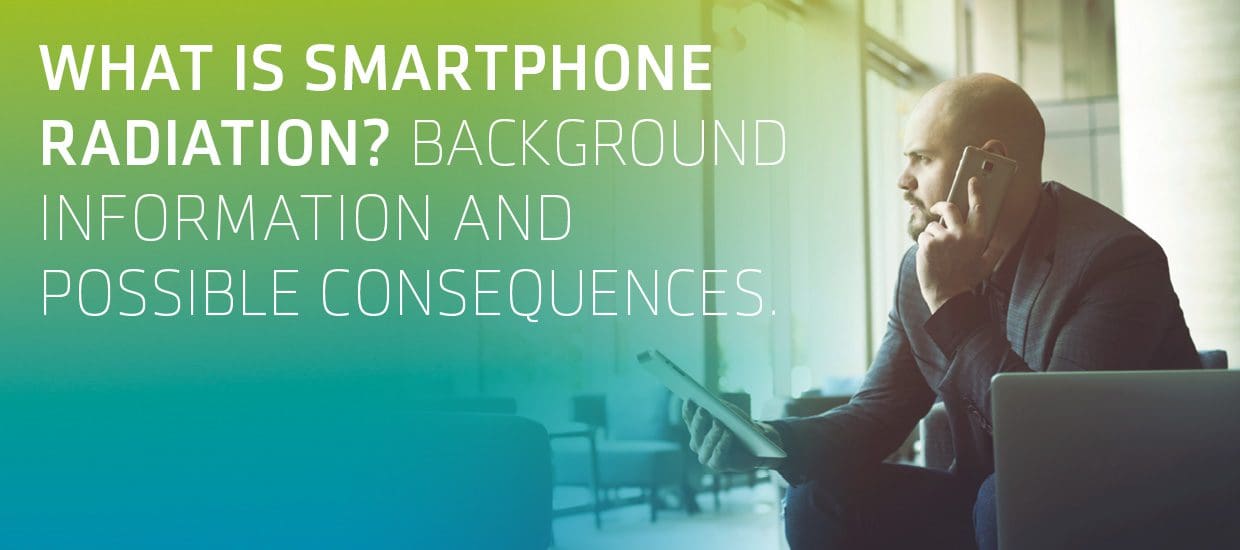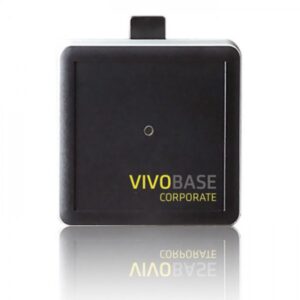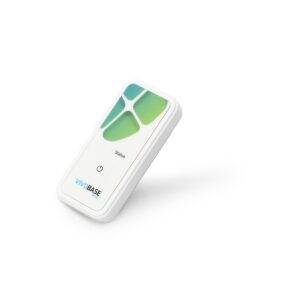
WHAT EXACTLY IS PHONE RADIATION?
For most of us, the smartphone has become an integral part of everyday life. We always have it with us for making phone calls and surfing the Internet. We write WhatsApp messages, send photos and check the latest posts on Facebook. In order to meet these demands, high-performance mobile phone networks are required. But how is it possible that you can make calls and log into the Internet from almost anywhere in the world?
Mobile phones use high-frequency electromagnetic radio waves to transmit data and voice. This enables the information to be transported from the mobile phone to the nearest base station. Speech and data are digitized and converted into radio waves. These radio waves, which are generated directly at the ear when using a mobile phone, are colloquially known as mobile phone radiation.
WHAT FREQUENCIES DO MOBILE PHONE AND MOBILE NETWORKS WORK WITH AND WHAT RADIATION EXISTS?
As can be seen from the website of the Federal Office for Radiation Protection (BfS) , most mobile phones transmit in the GSM (Global System for Mobile Communication), UTMS (Universal Mobile Telecommunications System) and LTE (Long Term Evolution) standard. GSM is referred to as the 2nd generation mobile communications standard (2G), UMTS as the 3rd generation and LTE as the 4th generation. The difference lies mainly in the transmission rates, which increase from generation to generation.
In order to ensure comprehensive networking, mobile phone masts and base stations are required, all of which are equipped with GSM, UMTS and LTE technology. Speech and data are passed on from the mobile phone to the surrounding base stations, which forward the signals to the recipient. The three mobile networks use the following frequency ranges:
- GSM: 900 and 1,800 MHz
- UMTS: 1,900 to 2,170 MHz
- LTE: 800 and 2,600 MHz
The extension of the mobile radio networks to other frequency ranges is planned. The LTE successor 5G is already being planned and will reach frequencies in the high GHz range in the next few years. The expansion and new construction of further base stations is necessary due to the rapid increase in mobile devices and the increasing bandwidth requirements, since each station can only process a limited amount of data. Each mobile radio base station has a transmitting and receiving device. Depending on the volume of calls, more or fewer base stations are required. In metropolitan areas more than in sparsely populated areas.
WHAT MEASURES ARE POLITICS AND GOVERNMENT INSTITUTIONS TAKE TO PROTECT US?
In order to protect the public from health hazards from electric and magnetic fields from low-frequency and direct current systems, limit values are specified in the 26th ordinance for the implementation of the Federal Immission Control Act (26th BImSchV) .
The so-called SAR value (specific absorption rate) is used as the basis for defining limit values in this area. It is a measure of the absorption of electromagnetic fields in a body or material. The absorption of electromagnetic energy always leads to heating of a body. The limit values for mobile phones are therefore only based on the thermal effect of electromagnetic radiation. Other influences of the radiation, such as possible damage to the genetic material of the cell or similar, are not taken into account. There are currently no long-term studies on these effects.
The maximum values recommended to protect health are
- 0.08 watts per kilogram (W/kg) averaged over the whole body and
- 2 W/kg averaged locally over parts of the body, for example in the head.
Quote from the recommendation of the BfS for telephoning with the mobile phone: "According to the current scientific knowledge, the internationally specified maximum values are sufficient to protect against proven health risks . However, there are still uncertainties in the risk assessment that could not be completely eliminated by the German Mobile Research Program. These relate in particular to:
- possible health risks of long-term exposure to high-frequency electromagnetic fields from mobile phone calls in adults (intensive mobile phone use for more than 10 years)
- the question of whether the use of mobile phones by children could have health effects.
For these reasons, the BfS still considers preventive health protection (precaution) to be necessary: exposure to electromagnetic fields should be as low as possible.”
WHAT PRECAUTIONS SHOULD BE TAKEN?
Mobile phones offer many advantages and it is about using this technology responsibly. Everyone should decide for themselves which protective measures they consider appropriate. According to the recommendations of the Federal Office for Radiation Protection, a low SAR value should be taken into account when buying a mobile phone. A list of the SAR values of mobile devices from different manufacturers can be found on the BfS website .
Whenever possible, landline phone calls should be preferred to cell phones. Calls with the cell phone should be as short as possible and ideally with a headset or hands-free system in the car so that the cell phone radiation does not occur directly on the head. If the reception is poor, you should avoid making calls if possible, since the mobile phone has to transmit with increased power and this increases the exposure to electromagnetic fields. In some cases, individual mobile phone manufacturers even explicitly point out in the operating instructions for their devices that a headset or loudspeaker should be used for telephoning in order to ensure sufficient distance from the ear and thus keep the influence of mobile phone radiation as low as possible.
You can find further background information and news on our website as well as on Facebook and Twitter .
Product overview
-
At home
VIVOBASE Home Protection
$549.00Add to cartProtection against elektrosmog and smartphone radiation at home
- Application in houses and apartments
- Approx 25 m Effective radius, through walls and ceilings with 110V
- 30 m radius if used with 220V
- Available as a plug for the socket
-
For animals
VIVOBASE Barn Animal Protection
$750.00Add to cartProtection against electrosmog for your animals
- Application in horse stables and livestocks, in riding centers and riding halls, in animal parks and zoos
- Approximately 40 m effective radius, through walls and ceilings
- Splash-proof wall-mounted device
- Requires hard-wire installation
-
For companies
VIVOBASE Corporate Protection
Select optionsProtection against elektrosmog and smartphone radiation for companies, hotels and public institutions
- Individual and personalized concept from installation to certification
- Available as surface mounting installation
-
In cars
Vivobase Move Portable
$379.00Select options This product has multiple variants. The options may be chosen on the product pageVIVOBASE Move replaces the mobile and car devices bringing the best attributes from both into one device. With the portability of the mobile and dramatically increased battery life combined with the range of the car device, the Move is the one to buy. Combine this purchase with the home and be protected 24/7/365. All devices come with a 2 year warranty. All products are German engineered and manufactured.




